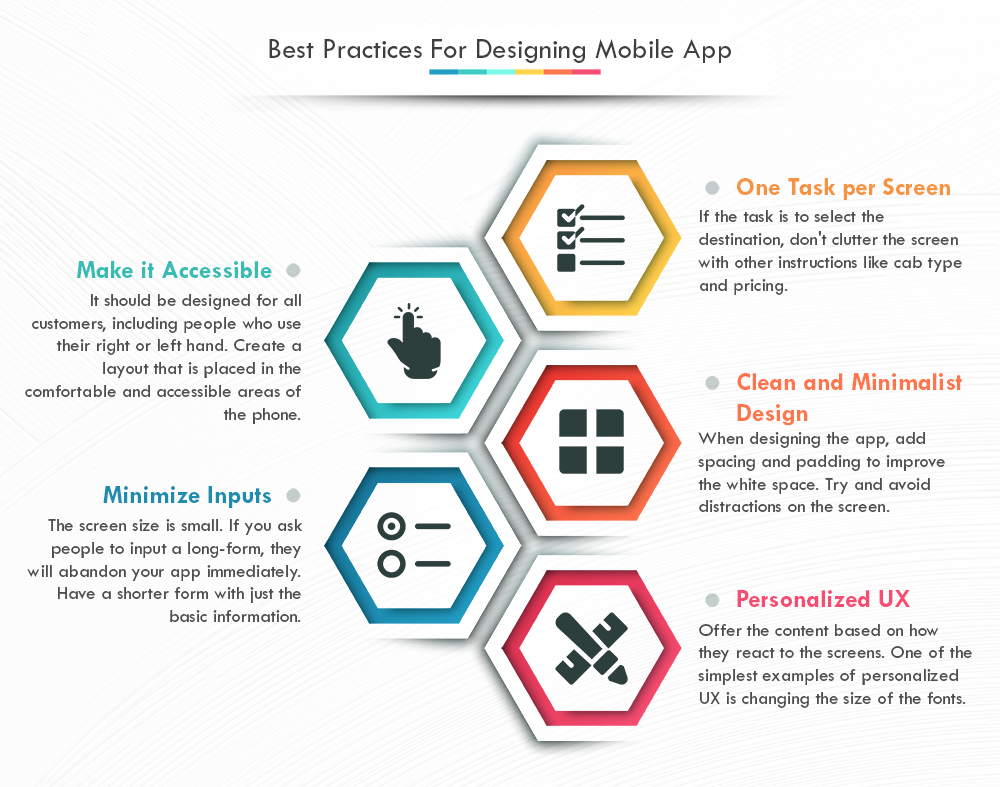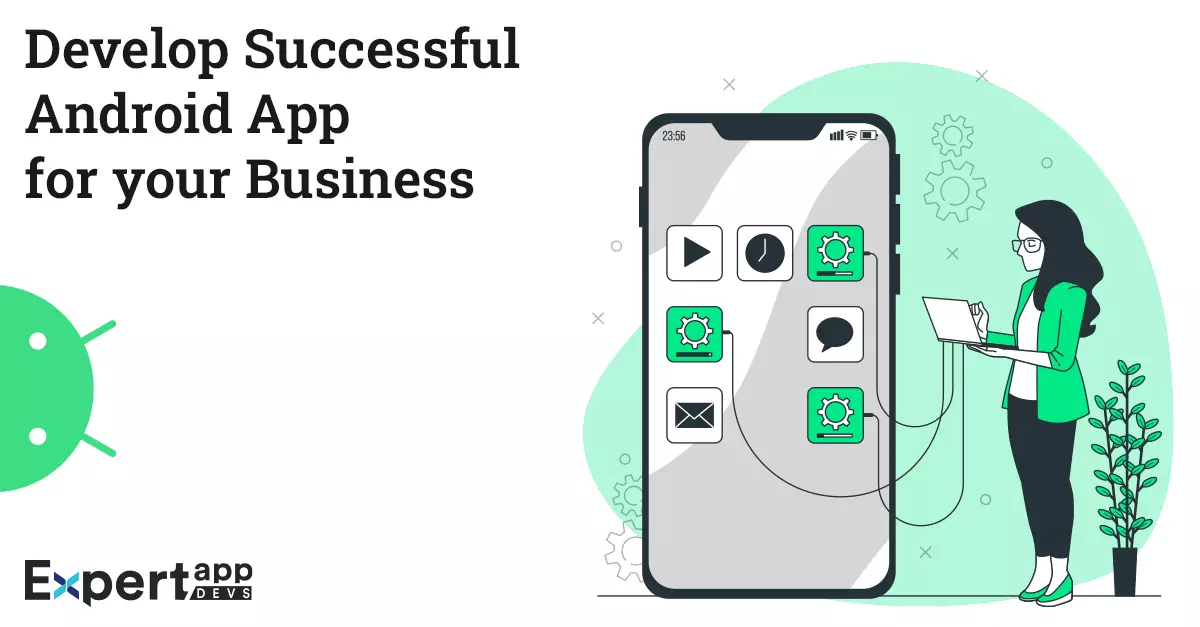How to Develop a Successful Android App for your Business?
Let’s state the obvious. Your biggest goal as a business owner is to onboard more customers. If your brand is visible to your target market, no one can stop you from acquiring them. For this, you need to be present where most of your target audience is.
It’s time to state the second-most obvious thing. Most of your audience owns a smartphone. According to Statista, there are at least 6.3 million smartphone users globally. Of these 88% (emarketer statistics) spend most of their media time in apps. According to the data from Sensortower, the Google Play Store downloads increased by 31% in 2020 while iOS saw a 2.5% growth.
This shows there is more demand for Android apps as compared to iOS. According to the American artist and book illustrator Florence Scovel Shinn "There is a supply for every demand."
To match the exponential demand and convert more customers, you need to build a successful Android app. In this guide, we will take you through what happens when you have decided on your app niche, the operating system (in this case, Android), and the technology partner.
Getting Started with Android App
Good ideas don't always translate into brilliantly designed and usable apps. Why?
There are several things that the app developer doesn't take into consideration, including what they need, how the app should look, and the goals they aim to achieve with the app.
Here we will take you through the first few steps that you need to take to develop a successful app solution.
#1 Determine the Purpose
Start by detailing the purpose behind your app idea.
Say you are planning an invoicing app solution. What do you aim to achieve with this app solution?
- Do you want to make the invoicing or estimating seamless for your customers?
- Do you wish to include a feature missing in the competitor app solutions?
This is just an example of how you can define your purpose. It depends on three factors:
- The target audience for your app
- The problem you are solving
- Core values of your business
#2 Benefits for the End-User
When you are on a mission to deliver a successful app solution, it is critical to be user-centric.
Why would your user download your app?
Answering this question is critical to maximizing downloads. It will help you identify the key benefits and differentiating pointers for your business app.
For example, Uber pioneered the on-demand cab booking market. They offered the convenience of one-click cab booking and in-app payments. This benefit made a lot of difference to the customers relying on public transport.
Similarly, apps like Miro made designing easy, hassle-free, and collaborative.
It becomes easier to sell the product and get more downloads when you think of the benefits.
#3 Identify the Key Features
The third step at this stage is to mention the app's features. When you visualize the benefits and the key differentiating factors, you can quickly ascertain the features.
Let's talk about the Uber example. The company offered convenience to the customers, which translated into easy cab booking. What features will help unleash this benefit?
- Ride booking allows customers to get a cab from point A to point B
- The price calculator helps estimate the ride fare
- Easy payment options will enable you to pay via card, wallet, or cash
- Maps give you a visual of where your driver is and how far away are you from your destination
If you see these features, they are all user-centric and offer convenience to the user.
When planning your mobile app development, you should also consider thinking through the features based on the benefits and core vision of the app.
#4 The Unique Selling Point
We are again going to the Uber example to explain this point. When this cab sharing app launched, several competitors also released similar solutions. The question here is, what is the difference between an Uber and the numerous apps?
It was probably the target market, the app vision, or a feature.
When you are working on an Android application for your niche, you must plan the differentiating point before proceeding with development.
You can identify your USP using the following techniques
- If it is an established niche, check for a gap in the existing solution
- Check for opportunities in an untapped market or idea
- Check for the missing feature in the application
Knowing your USP can help you plan your app better. It also allows you with positioning and marketing.
#5 Design Considerations
When developing an Android app, you should design multiple resolutions and form factors.
Design considerations should include ease of navigation and accessibility. For instance, when the thumb moves on the screen, it should easily access the elements. The thumb should not feel the stretch when accessing the app screen.
Android App Design Tips
Android is a fragmented operating system with many screen sizes, form factors, and resolutions. You cannot plug the same design across the different Android devices. Designing and developing Android apps can be expensive and time-consuming.
However, there are a few Android design tips that can reduce your burden majorly if incorporated.
Use Relative Layout
Instead of having an absolute position for all the elements in the app, opt for a relative position. Mark one of the elements on the page as primary. Now, define the position of all the other elements concerning the parent position. This will help when using the same design across different resolutions.
Avoid Image Hardcoding
When you restrict the size of an image, you cannot use it across sizes and resolutions. To ensure you can use the same image, you should avoid hardcoding them. Use the codes "wrap_content" and "match_parent." It will eventually take the screen size into account to resize the images. As a result, you can use them as it is across devices.
The 9-patch Images
It would help to incorporate this standard Android design practice for standardized and quick designs. With the 9-patch designs, you can use the standard images for elements like buttons. As a result, you won't need to design them separately for the screen sizes; it will easily accommodate to suit the resolution and size.
Preview in Layout Editor
As a designer, you should know if your design matches the stated standards. As a result, you should leverage the layout editor to view your designs in real-time. You can configure the various devices for testing and editing. It will help you consider the designs across sizes and see if they will work.
Mobile App Design Best Practices
Imagine your app's end-user. How do they use a mobile app? Do they navigate through the screens and buttons with their thumb? Do they cradle the phone in one hand?
How customers interact with the mobile helps develop the best practices for app development.
According to a survey conducted by UXMatters, 49% of customers held their devices using one hand while a good 36% had it in cradled position.
Another fascinating insight they received was how the customers changed the holding position. For example, if they were viewing a video, they would hold it in a landscape position with their two hands. Similarly, they would opt for portrait and single hand holding for social media apps.
In the case of one hand, several customers used the app with their right hand, while a few others preferred their left hand.
All these insights help develop the screen, plan the elements' position, and deliver the apt user experience.
Read More: Top 10 Mobile App UI Design Examples to Inspire You
Here are a few best practices for designing your mobile app:

The App Development Process
Your partner agency would have a process in place to develop a successful Android app. This will ensure you have handled all aspects of app development before deploying it.
In-depth Research
The research should not be limited to the app niche or the development goals; you need to go beyond the horizon. It should start with listing the requirements, move on to competition analysis and end with industry insights.
Ideation and Planning
Building on your app idea should ideally be your next step. For example, if you have an idea of developing an on-demand laundry app, your insights and analysis will help ideate the app. It will give you enough understanding of the target market, usage, and the gaps that exist.
It would help to plan your app development process based on your ideation. It should be detailed in every part of the development, including your app development cost estimate and timeline.
Make sure you have also defined the technology for the same, as that will come in handy when the development begins.
Prototyping
App design is essential to translate your idea into a success. Ideally, it would help create wireframes for the app solution you plan to offer your target market.
The wireframes will help you design the solution. It will act as your guide. For instance, it is very abstract if you want to showcase whitespace and minimalist design without a proper frame.
Adding it to a wireframe gives some perspective on the design and helps you know how the app screens look.
Similarly, prototyping also allows you to know if your elements are on the accessible side of the screen or not.
Design and Assessment
Let's work on translating the wireframes into nicely designed app solutions. You can use the Android app design guidelines to improve the look and feel of the app.
It is essential to be guided by the material design documentation to make an intuitive and interactive interface when designing.
If you are not getting it developed in-house, connect with the partner agency about the design understanding.
It would help if you remained in the loop to assess, offer feedback and approve the app's designs.
Development
It's time to code the designs. Ideally, you should avoid complex coding significant elements of the wireframes as they need to be responsive.
When developing an Android app, you need to make sure you have considered database management and planned the interaction well.
The backend should be as smooth as the front-end for an impressive outcome.
Testing
It is essential to test your app thoroughly before deploying it to the app store. Use the different automated and manual testing tools and methods to get the apt outcome.
It would help if you ideally had a plan for testing wrote the suitable test cases before beginning the process.
Optimization
Your app should be easy to search and visible to all who want to download these solutions. As a result, optimizing your app with relevant content, high search volume keywords, and appropriate phrases is essential. It will help improve the search quality.
How We Do Things Differently at Expert App Devs
The team at Expert App Devs continuously works towards improving experiences and engaging customers. We have the right mix of strategists, business developers, UI/UX designers, developers, and testers who help develop a successful solution.
- Let's begin with the experience- with over 11 years of experience, we have a decent idea of what the end customers need. Our understanding of businesses, processes, and vision clarity allows us to buildable solutions.
- You state we visualize- We make sure to understand how you envision the whole solution. If you have a vision of what your customers will get with the app, we try to convert it into an image.
- We don't work in silos- Collaboration is the key to getting the most out of our solutions. We ensure that the strategist works with the design team to get the best app outcome.
Conclusion
To develop an engaging and highly successful android app solution, you should know the
- company's vision
- end goals of the product
- the purpose of the app
- the target market
- the consumption patterns
Businesses need to get guidance from the right people to launch an app. With Expert App Devs as your partner, you get an end-to-end solution. We conduct A/B testing to help realize the need for your answer and validate it. We offer the right mix of art and science to develop intuitive interfaces and reliable logic upon validating the solution.
 Anand Makwana
Anand Makwana





